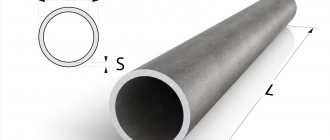After steel is smelted, the steel ingot is rolled into a metallurgical workshop. Rolling makes it possible to obtain metal of the required thickness, and an example of rolling technology is blooming. What are the stages of steel rolling using the blooming method? And how does this technology differ from slabping? Below we will consider all these issues in detail.
Rolling metal processing - blooms and slabs
At the final stage of metallurgical production, metals are processed by rolling. Rolling can be used to produce various workpieces. However, more often this technology is used to produce special semi-finished ingots - blooms or slabs. In a number of indicators, slabs and blooms are very similar, but there are a number of differences between them:
- Blooms. They are semi-finished steel products in the form of square ingots with slightly rounded ends. Semi-finished blooms are produced by pressing on special mills. In most cases, bloom ingots weigh 10-15 tons, the side of the ingot is 15-45 cm, and the length is from 1 to 5 m. Blooming mills are also used to produce some products - beams, channels, and so on.
- Slabs. Slabs are also semi-finished steel products, but they differ from blooms in size. The slab has the form of a long strip of quadrangular rectangular shape. The thickness is 10-25 cm, and the width is from 3 cm to 2 m (the length is usually in the range of 1.5-5 meters). Slabs are produced on special slab mills, which have a different structure from blooming mills.
Blooming technology
Blooming has the form of two frames, which are combined into a cage installation (height from 6 to 10 meters). The beds are rotating castings onto which large metal rolls made of steel with nickel and chromium additives are attached. The operating technology of such an installation is very simple: the rolls, under the influence of an electric current, slowly rotate around their axis, and when a steel ingot gets between them, it is compressed, resulting in a bloom.
Please note that the upper roll usually has a built-in electric drive for raising and lowering the installation - due to this, the thickness of the bloom ingot is regulated. In addition, blooming installations are equipped with auxiliary elements - spare electric motors, cooling systems, installations for supplying lubricants to the surface of the rolls, and so on.
Also note that this is a general outline. In practice, there are also multi-stand installations, blooming machines with reverse feed of the workpiece, installations with three rolls, and so on. The most popular plants in Russia are Blooming 1300 and 1150, which show good technical and operational performance, rarely break down and do not require special maintenance. There are also more modern installations, and the most powerful industrial-type units can produce about 5-6 million blooms per year.
Advantages
Blooming technology has many advantages that competing rolling technologies do not have:
- You can adjust the degree of lifting of the upper roll - thanks to this, you can adjust the degree of compression of the semi-finished bloom product, as well as adjust its overall thickness.
- It is possible to control the running speed - this significantly simplifies the running process, which allows you to obtain a high-quality workpiece.
- Using the same rolls, blooms of different weights and cross-sectional diameters can be obtained. This significantly increases the productivity of the blooming mill. If the order changes, the operator will not have to change the entire installation; it will only be necessary to slightly change the parameters.
A blooming shop usually consists of three main parts. In the first block, electric motors are mounted to rotate the frames on blooming installations. Typically, several motors are installed at once - both in case of an accident and for situations where additional power is required for the units. In the second block, the blooming installation + various auxiliary mechanisms for feeding metal blanks are directly mounted. The third block is auxiliary - all production waste (scale, trimmings, etc.) is collected and stored here.
Stages of metal rolling
Let's now learn about how metal rolling directly occurs using the blooming method:
Heat
Before running in, it is necessary to warm up the metal workpiece. This will give the material plasticity, which will have a positive effect on the quality of its running-in. To heat the ingots, they are placed into special wells using taps, where they are heated to 1300 degrees. For more optimal heating, the ingots are usually placed in a vertical direction along one of the walls of the well. The heating time of the ingots directly depends on their initial temperature. If completely cold metal is placed in the wells, then heating takes about 14 hours. If the ingots enter the wells at a temperature of 500-800 degrees, then no more than 8 hours.
Delivery, weighing, moving
After heating, the ingots are removed from the well using the same taps. The heated ingots are weighed. Then the operator selects the format for placing the ingots, and if necessary, he can rotate the ingots by turning 180 degrees. Why is this necessary? The thing is that if “unquiet” steel is placed in the standard direction, a large amount of scraps and scale will result. Reversing the bottom of the ingot will reduce the amount of “garbage”, which is very important from the point of view of production savings.
Compression
Now the ingot is directly compressed in a blooming installation. Compression is usually carried out in 10-15 passes, depending on the diameter of the final semi-finished bloom you need to obtain. During one crimp, the workpiece usually decreases in size by 5-15 centimeters. The full rolling cycle takes 30-60 seconds (at a maximum speed of 7-8 m/s). Crimping is a rather labor-intensive and complex undertaking, and it is carried out by bloom machine operators.
Final processing of the finished bloom
After receiving the bloom semi-finished product, final processing is carried out. For processing, special MOP machines are usually used, which are essentially modified burners. After processing the blooms using torches, trimming is carried out. First, the bad ends of the workpiece are cut off, and then, using a special cutting apparatus, the bloom is cut into several equal parts. According to GOST standards, at the end a special mark must be applied to all parts of the bloom. On which technical information will be indicated - steel grade, production cycle number, basic information about the operator. Finally, using a conveyor belt, the blooms are sent to the warehouse for final labeling and storage.
Production of blooms, slabs and long products
The first blank when making long products or sheets is an ingot. Before rolling, the ingot is heated to a temperature of 1300 ° C and rolled with crimping to obtain a square billet with sides of 450x450-150X150, called a bloom (modern blooms and slabs are almost always obtained from continuous casting of steel).
Bloom is the starting material for producing large profiles in a large cross-section mill or is cut into measured pieces and rolled into square blanks ranging in size from 150 x 150 to 60 x 60 mm for cooling and surface treatment (grinding). ) Then it is sent to medium and small grades or a wire mill. Continuous billets are installed next to the bloom, and their rolling is carried out immediately after obtaining the bloom without additional heating.
- Larger ingots (up to 60 tons) are rolled into rectangular slabs with a maximum thickness of 350 mm and a width of 2300 mm. Plates are the starting material for rolling into thick sheets.
After rolling the slab, part of the rolling is sent to the billet mill. The resulting strip is cut into measured pieces of the required length, folded forward and transferred to a warehouse for cooling. Post-processing includes finishing operations such as cleaning, etching and removal of surface defects.
- Depending on the quality of the ingot and the degree of deoxygenation, the yield of these operations is 80-90%.
- The blanks obtained in this way after finishing work are sent to a high-quality sheet rolling mill.
Rail rolling sequence of rolling mill
In a high-quality mill, after heating in a furnace, the workpiece is continuously rolled to a thickness of 7-15 and finally the required profile is obtained. After cutting to the measured length, the resulting profile is cooled, modified at low temperature and heat treated.
To produce a thick sheet, the slab is rolled in two directions perpendicular to each other (longitudinal and transverse) to provide the desired width and reduce the degree of anisotropy in the finished product. Thick sheet rolling is carried out on single- or double-stall mills at high temperatures.
Hot or cold rolled steel sheet. Hot rolled sheets are usually produced with a thickness of more than 1.25 mm. To obtain thinner sheets, use hot-rolled sheets as blanks. After descaling by annealing, pickling and washing, rolling is carried out in a single or multi-strand continuous 4-roll or multi-roll mill.
After annealing, the sheet for cold sheet stamping is further processed in a hardening factory.
Training takes place on the cold rolling mill and is reduced to 3% for cold working. The sheets obtained after training, annealing and etching are called headless.
- Thanks to the latest technologies, sheets with a total compression of up to 80-90% and a thickness of less than 0.1 mm can be produced without intermediate heat treatment by continuous cold rolling.
See also:
Examples of solving problems in materials science
| Centrifugal casting. | Features of weldability of aluminum and magnesium alloys. |
| Factors that determine the duration of solidification of castings. | Forward and reverse pressing. |
Difference between blooming and slabing
Slabing is very similar to blooming technology. What is the difference between them? The main difference is that the slab machine has not 1, but 2 pairs of rolls. They are located relative to each other in a perpendicular direction. During rolling, the billet ingot is compressed in two directions at once. It may seem that slabs are more popular in metallurgy, but this is absolutely not the case. The thing is that the productivity of the slab mill is 2-2.5 times lower than the productivity of the blooming mill. Therefore, today these two methods are used on an equal basis with each other to solve different technological problems.
It is also worth noting that throughout the world, blooming technology has long gone out of use. Why did this happen? This is due to the fact that blooming is still far from ideal. Its main disadvantage is that during rolling a large amount of scale and scraps are formed. Because of this, the final costs of steel increase, which negatively affects its final price for the consumer. Therefore, now blooming installations remain mainly in the territory of the former Soviet Union. Throughout the rest of the world, more modern and economical methods of rolling steel blanks are used.
Accessories Blum
The Blum company was founded in 1952 by the Austrian blacksmith Julius Blum. Blum's career began with making horse shoe attachments that provided stability for horses on a variety of surfaces. The small detail became the basis for future Blum premium fittings. As the company grew, branches were opened all over the world.
At the moment, Blum fittings are synonymous with reliability and quality. The corporation is a generally recognized world leader in the manufacture of kitchen accessories. Thanks to high quality and innovative technology, this manufacturer surpasses its competitors. Let's look at the types of Blum fittings.
Aventos lifting mechanisms
Aventos lifting mechanisms make it easy to open upper cabinets; if necessary, you can leave the door open in any position. The built-in shock absorption system ensures smooth opening and silent closing of the door. The mechanisms do not spoil the appearance of the facades and allow you to create a unified design of the upper and lower kitchen cabinets.
HF. Folding model of the lifting mechanism. An excellent option for Blum fittings for tall upper cabinets, which consist of two parts. Possible production for asymmetrical facades.
H.S. This mechanism is suitable for kitchen cabinets with a height of 350 mm to 800 mm; opening is carried out by smoothly tilting the door above the cabinet. There are three levels of adjustment, the power mechanism is suitable for heavy facades.
H.L. With this opening mechanism, the door rises up parallel to the body, suitable for upper cabinets above which other cabinets are located. Suitable for cabinet heights from 300mm to 580mm.
H.K. The solid façade rises perpendicular to the body. The rotating lift lifts the cabinet door, leaving it in a horizontal position, which is convenient for cabinets located under the ceiling. Suitable for enclosures up to 600 mm high.
HK Top. The difference from the Aventos HK model is that the HK Top has more compact dimensions. This mechanism is very popular among users for its minimalistic design and ease of installation.
HK-S. The improved small model of the rotary mechanism was developed specifically for small kitchen cabinets.
HK-XS. Lifting mechanism for housing heights from 240 mm to 600 mm. The difference is in the shallow installation depth, suitable for narrow kitchen cabinets.
Hinge systems
Compact hinges of any size in combination with proprietary Blum fittings closers will ensure smooth opening and closing of cabinets. Shock absorbers make the mechanism silent.
CLIP Top. This loop system has been tested by millions of users around the world. Smooth and silent door opening, easy adjustment, easy installation and dismantling. Suitable for facades made of any materials.
CLIP TOP BLUMOTION. The same hinge, but already equipped with the proprietary Blumotion shock absorption system. The shock-absorbing system is built into the hinge cup and adapts to the speed at which the door closes.
MODUL. These hinges feature three-dimensional adjustment, are easy to install, and also prevent unwanted door removal during adjustment.
Drawer systems
LEGRABOX. The most elegant and thinnest drawer in the line of sliding systems, thin sides are suitable for furniture of any design. The emphasis of this system is on clear shape and straight lines. Legrabox boxes are resistant to heavy objects.
TANDEMBOX. Such extension systems ensure smooth and silent opening of kitchen drawers. Plastic rollers provide easy sliding and dynamic loads from 30 kg.
METABOX. The line of retractable systems Blum and Metabox includes partial extension drawers. Such boxes consist of several components. Metabox allows you to create structures of various shapes.
The contractors of the KitchenOnline.ru portal deal with any kitchen fittings; they will make a kitchen for you according to any of your preferences.
Just leave a request and expect the best price offers from proven providers in St. Petersburg! Order a kitchen








